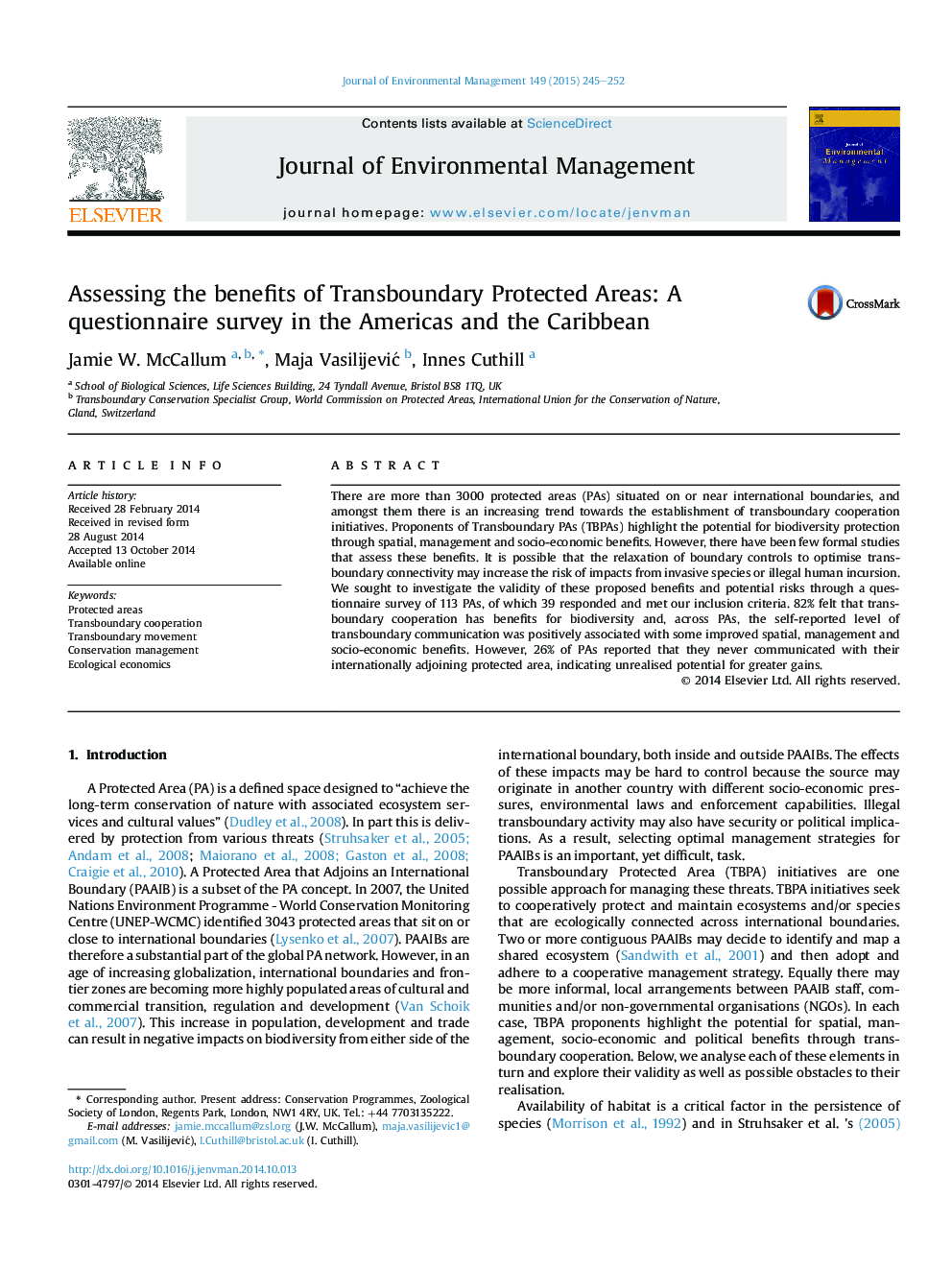| Article ID | Journal | Published Year | Pages | File Type |
|---|---|---|---|---|
| 7483287 | Journal of Environmental Management | 2015 | 8 Pages |
Abstract
There are more than 3000 protected areas (PAs) situated on or near international boundaries, and amongst them there is an increasing trend towards the establishment of transboundary cooperation initiatives. Proponents of Transboundary PAs (TBPAs) highlight the potential for biodiversity protection through spatial, management and socio-economic benefits. However, there have been few formal studies that assess these benefits. It is possible that the relaxation of boundary controls to optimise transboundary connectivity may increase the risk of impacts from invasive species or illegal human incursion. We sought to investigate the validity of these proposed benefits and potential risks through a questionnaire survey of 113 PAs, of which 39 responded and met our inclusion criteria. 82% felt that transboundary cooperation has benefits for biodiversity and, across PAs, the self-reported level of transboundary communication was positively associated with some improved spatial, management and socio-economic benefits. However, 26% of PAs reported that they never communicated with their internationally adjoining protected area, indicating unrealised potential for greater gains.
Keywords
Related Topics
Physical Sciences and Engineering
Energy
Renewable Energy, Sustainability and the Environment
Authors
Jamie W. McCallum, Maja VasilijeviÄ, Innes Cuthill,
